
John Hasbrouck Van Vleck was an American physicist and mathematician. He was co-awarded the Nobel Prize in Physics in 1977, for his contributions to the understanding of the behavior of electronic magnetism in solids.
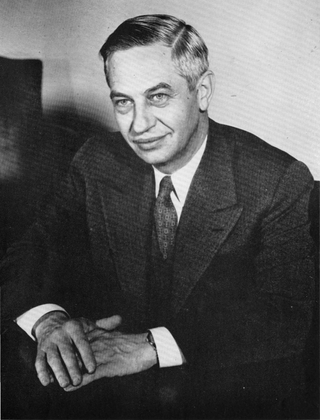
Lee Alvin DuBridge was an American educator and physicist, best known as president of the California Institute of Technology from 1946–1969.
Donald Edward Osterbrock was an American astronomer, best known for his work on star formation and on the history of astronomy.
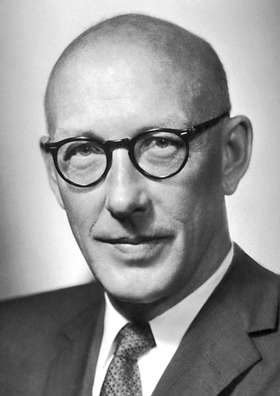
Edward Lawrie Tatum was an American geneticist. He shared half of the Nobel Prize in Physiology or Medicine in 1958 with George Beadle for showing that genes control individual steps in metabolism. The other half of that year's award went to Joshua Lederberg. Tatum was an elected member of the United States National Academy of Sciences, the American Philosophical Society, and the American Academy of Arts and Sciences.

Clinton Joseph Davisson was an American physicist who won the 1937 Nobel Prize in Physics for his discovery of electron diffraction in the famous Davisson–Germer experiment. Davisson shared the Nobel Prize with George Paget Thomson, who independently discovered electron diffraction at about the same time as Davisson.
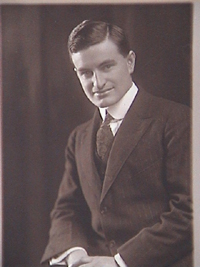
Farrington Daniels was an American physical chemist who is considered one of the pioneers of the modern direct use of solar energy.

William David Coolidge was an American physicist and engineer, who made major contributions to X-ray machines. He was the director of the General Electric Research Laboratory and a vice-president of the corporation. He was also famous for the development of "ductile tungsten", which is important for the incandescent light bulb.
John Zeleny was an American physicist who, in 1911, invented the Zeleny electroscope. He also studied the effect of an electric field on a liquid meniscus. His work is seen by some as a beginning to emergent technologies like liquid metal ion sources and electrospraying and electrospinning.
Henry Herman ("Heinz") Barschall was a German-American physicist.
Chauncey Starr was an American electrical engineer and an expert in nuclear energy.

Dugald Caleb Jackson was an American electrical engineer. He received the IEEE Edison Medal for "outstanding and inspiring leadership in engineering education and in the field of generation and distribution of electric power".
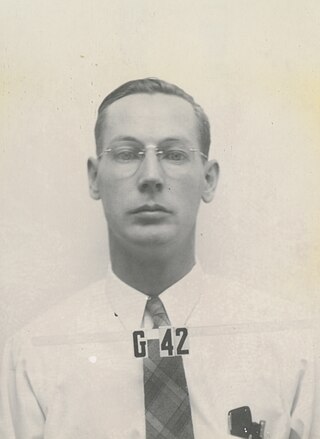
Donald William Kerst was an American physicist who worked on advanced particle accelerator concepts and plasma physics. He is most notable for his development of the betatron, a novel type of particle accelerator used to accelerate electrons.

Henry Andrews Bumstead was an American physicist who taught at Yale from 1897 to 1920. In 1918 he was scientific attache to the United States embassy in London. In 1920 he was Chairman of the National Research Council.
Robert Byron Bird was an American chemical engineer and professor emeritus in the department of chemical engineering at the University of Wisconsin-Madison. He was known for his research in transport phenomena of non-Newtonian fluids, including fluid dynamics of polymers, polymer kinetic theory, and rheology. He, along with Warren E. Stewart and Edwin N. Lightfoot, was an author of the classic textbook Transport Phenomena. Bird was a recipient of the National Medal of Science in 1987.
Kenneth Meyer Setton was an American historian and an expert on the history of medieval Europe, particularly the Crusades.
Harvey Brooks was an American physicist, "a pioneer in incorporating science into public policy", notable for helping to shape national science policies and who served on science advisory committees in the administrations of Presidents Dwight D. Eisenhower, John F. Kennedy, and Lyndon B. Johnson. Brooks was also notable for his contributions to the fundamental theory of semiconductors and the band structure of metals. Brooks was dean of the Division of Engineering and Applied Sciences of the Harvard University.
William F. Banholzer is an American Professor of Chemical and Biological Engineering at the University of Wisconsin-Madison. Prior to this role, he was formally a chemical engineer and Executive Vice President and Chief Technology Officer at the Dow Chemical Company. He is most known for his leadership of industrial R&D organizations at both Dow Chemical Company and General Electric. He is also known for the discovery of methods related to production of synthetic diamond. In particular, the synthesis methods he developed allowed the production of isotopically pure diamonds.
William Rudolph Kanne, was a physicist, inventor and pioneer in the field of gas flow through ionization detectors, a member of the group responsible for the first self-sustained nuclear chain fission reaction at Staggs Field in Chicago, and participated in the Manhattan Project at the Chicago, Oak Ridge and Hanford sites.

Michael Stewart Witherell is an American particle physicist and laboratory director. He has been the director of the Lawrence Berkeley National Laboratory since 2016. Witherell, a particle physicist, previously served as Director of Fermilab. He previously served as professor and vice chancellor for research at the University of California, Santa Barbara.
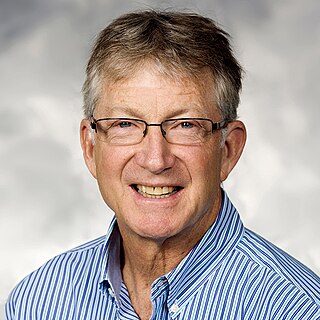
James L. Skinner is an American theoretical chemist. He is the Joseph O. and Elizabeth S. Hirschfelder Professor Emeritus at the University Wisconsin-Madison. He is also a member of the Scientific Advisory Board of the Welch Foundation. Most recently, Skinner was the Crown Family Professor of Molecular Engineering, professor of chemistry, director of the Water Research Initiative and deputy dean for faculty affairs of the Pritzker School of Molecular Engineering at the University of Chicago. Skinner is recognized for his contributions to the fields of theoretical chemistry, nonequilibrium statistical mechanics, linear and nonlinear spectroscopy of liquids, amorphous and crystalline solids, surfaces, proteins, and supercritical fluids. Skinner is the co-author of over 230 peer-reviewed research articles.










